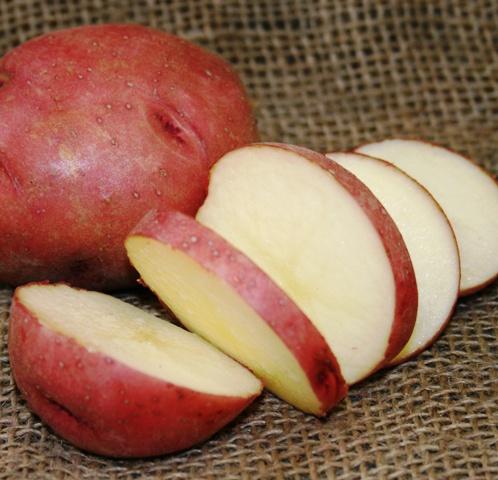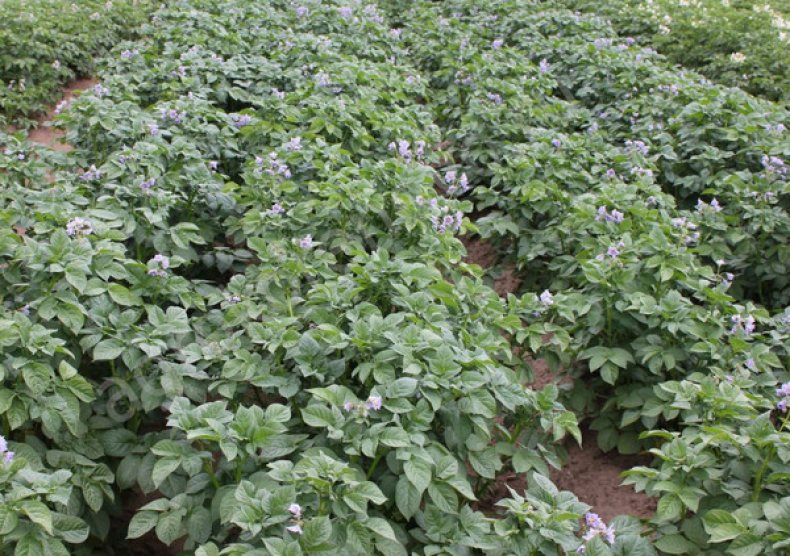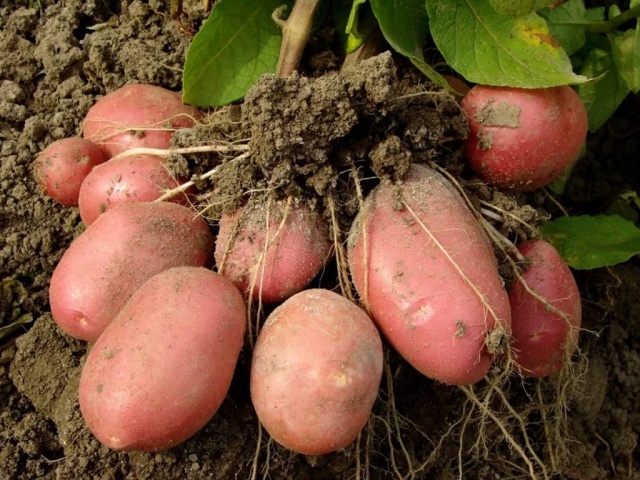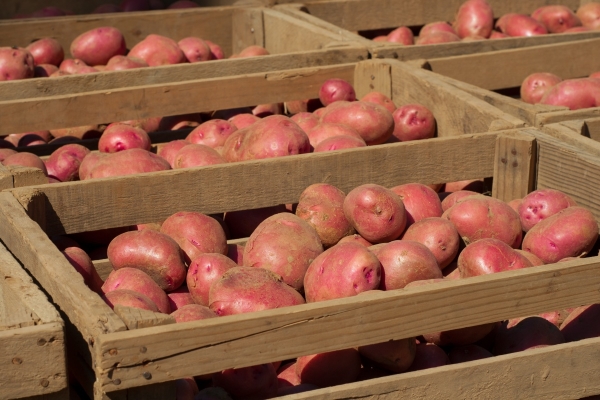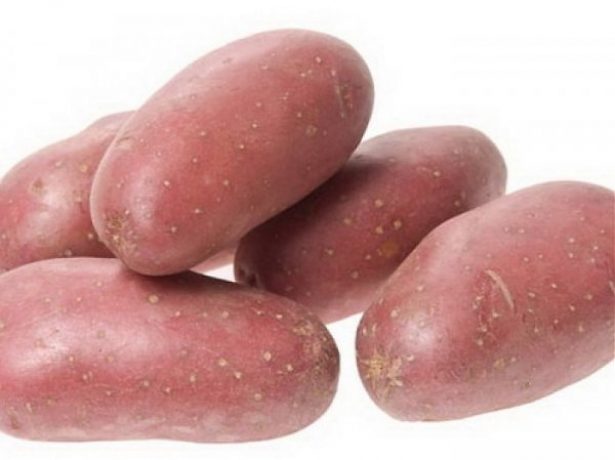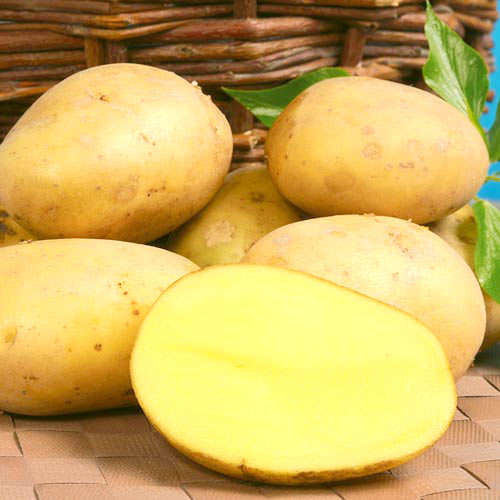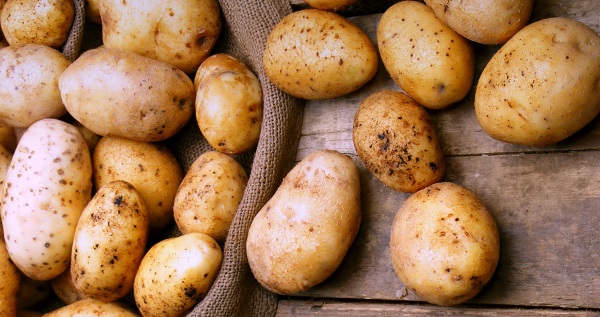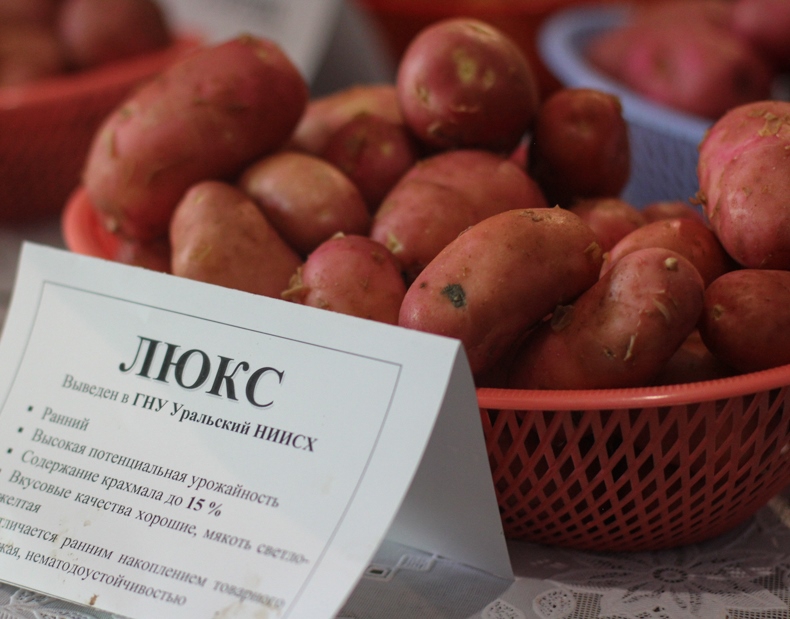Content:
Rocco is a Dutch variety of potatoes. It gained popularity very quickly and spread to many countries. It is grown in China, India and France. Spanish, Australian and French farmers are familiar with these potatoes. The bred subspecies is cultivated in the Belarusian, Kazakhstan, Ukrainian and Moldavian fields. This variety appeared in Russia in 2002. Due to the high yield, potatoes began to be grown not only on personal plots, but also on an industrial scale. It is cultivated by state, farm and private horticultural enterprises. Nowadays, buying seed material of this potato variety is not a problem.
Features of the variety
Choosing potatoes for planting, gardeners put forward serious requirements so that they do not get sick, ripen quickly, give a good harvest and be well kept. Rocco potatoes meet all these conditions. It is a table variety that tastes good and does not darken after boiling. It is fragrant and crumbly. This potato is a mid-season potato with a growing season of 100 to 115 days. In each region, the harvest time may be different, as it depends on the weather and climate conditions.
Plant parameters
Rocco's bushes are erect, up to 50 cm in height, with large bright green leaves. The variety blooms with purple and red flowers. In one bush, 10-12 pieces of even tubers are formed. Oval-shaped potatoes with red pink skin and cream-colored flesh. The average tuber weight is up to 125 grams. Rocco's potatoes contain 14% starch. It is resistant to disease and keeps well.
Frost resistance
Successful potato cultivation is, first of all, a rich harvest. It is possible to achieve the full return of the effort and time spent, taking into account the peculiarities of the climate, soil, timely weeding, feeding and watering. But no less important is the correctly selected suitable varietal material of potatoes. For example, in the Urals zone there are several regions with their own characteristics. In these areas, such a property as frost resistance of potato varieties is of great importance. Here, preference is given to early and medium varieties. The selection of the assortment is wide enough, it also includes the Rocco variety, popular all over the world.
Yield
In the southern regions of the country, potatoes are planted in late March - early April. In more northern regions, the planting time is shifted, but it is also impossible to be late with it, otherwise the number of grown tubers may decrease by half. A large and high-quality harvest of a marketable potato is obtained subject to the following rules:
- Planting on a site with light loamy, sod-podzol, sandy loam soil of a neutral reaction;
- Smooth, open to the sun and well warmed up, weed-free field;
- Varietal, healthy, without cuts and damage, high quality tubers, treated before planting with "Epin".
In terms of yield, this species is the leader among other potato varieties.
Flowering and fruiting
The peculiarity of potatoes is that they do not always bloom, but this does not affect the yield. Rocco's yield per hectare is 400 centners of potatoes.
Growing and care
“Rocco” is an unpretentious variety, it can grow well under any conditions. It is calmly grown by all gardeners, even those who have never done this and are not familiar with the rules and techniques of agricultural technology.The varietal type of potato prefers sod, loamy and sandy soil with the addition of black soil.
Potatoes are hygrophilous, they need a sufficient amount of moisture, in the absence of rain, they must be watered regularly.
To obtain a rich harvest, top dressing is applied: ammonium nitrate, organic matter and potassium. Potash fertilizers contribute to better preservation of potatoes in winter.
Wood ash is annually introduced into the soil: when digging a site, into planting holes and as top dressing.
Planting potatoes
Tubers are sorted out before planting and kept for several days in the air until warming up and the appearance of eyes, then the seedlings appear faster.
Planting is carried out in several stages:
- They dig up the site or pass it with a walk-behind tractor to obtain loose, breathable soil;
- The site is leveled and cleaned of weeds;
- The planting material is treated with drugs: Epin, copper sulfate or potassium permanganate with boric acid. This is the prevention of fungal diseases;
- To increase the starchiness of tubers, place a glass of wood ash in the holes during planting. If you throw 1-2 peas into the hole with the tuber, they will provide the potato bush with the necessary amount of nitrogen.
Many gardeners use different planting schemes, but most potato growers plant the old-fashioned "shovel". This is an easy and quick way. The essence of the method is that they dig holes about 5 cm deep with an interval of 30 cm and a distance between rows of 70 cm.
The seed potatoes are laid out and covered with earth. Reducing the distance between the holes and rows makes care difficult, and the plants receive less nutrients and lighting, they are less ventilated and can get sick. It should be borne in mind that it is worth planting this way on dense and heavy soil. On loose and light soil, the depth of the holes is increased to 10-12 cm. On damp and dense areas, where the soil warms up late, use the ridge method of planting potatoes. Thus, the bushes are raised above the soil level, creating the most favorable conditions for growing.
Potatoes are resistant to drought, but if possible, it should be watered regularly throughout the season. This will increase the yield. Fertilizing potatoes with organic fertilizers will accelerate the process of photosynthesis, provide resistance to mechanical damage, and increase the shelf life.
Care rules
Potato care includes the following activities:
- Systematic thorough weeding;
- Regular watering of plantings 1-2 times a week and preferably mulching the row spacing. Mulch protects against weed growth and retains moisture. Many also use hilling potato bushes;
- Loosening the soil to increase air permeability;
- Use of green manure plants (lupine and mustard), which help to reduce the spread of wireworm and Colorado potato beetle on potato plantations;
- Preventive spraying to protect against diseases and pests with fungicides, insecticides and infusions according to folk recipes;
- Timely harvesting after yellowing and lodging of tops.
It is impossible to be late with harvesting, otherwise the fruits will begin to rot and deteriorate. The dying off of the tops speaks of the readiness of the crop. A trial dig will make sure the potatoes are ripe. They try to harvest the potatoes before the rainy season. The tops are first mowed and removed from the site. The dug out potatoes are laid out to dry, after which they are packed into boxes and removed to the basement or cellar.
Rocco seed potatoes are immediately selected and stored separately. Potatoes are well kept. It is also easy to transport, which allows you to grow it not only for your own consumption, but also for sale. During storage, the necessary conditions are created: lack of moisture and not too low air temperature.
Variety advantages and disadvantages
Rocco potatoes have been cultivated in our country for over 10 years and not only have not lost their popularity, but are also among the leaders in taste and yield.The main advantage of the variety is its resistance to most potato diseases. According to reviews and descriptions of gardeners, unfavorable growing conditions do not affect its growth too much, and the yield is not significantly reduced. Its advantages over other varieties:
- Taste qualities... Table-grade potatoes to taste are not only ideal for thermal processing at home, but also used by large enterprises for the manufacture of chips and French fries;
- High yield... Considering the number of tubers in the bush and their weight, this variety is considered the highest yielding variety. He is able to give from 1 hectare to 400 centners of tubers of good presentation;
- Disease resistance... Not all plants are able to resist viruses. Rocco is not afraid of many potato diseases and pests: nematodes, mosaics and other viral diseases. Late blight poses a slight danger to him. To reduce the risk of infection, plantings are treated with special preparations;
- Keeping quality. Potatoes have a very long shelf life under optimal conditions. It does not lose taste during storage, does not deteriorate and does not fade;
- Unpretentious care... The plant is not picky about weather conditions and compliance with the rules of cultivation, withstands fluctuations in soil moisture and air temperature. Planting this variety in a summer cottage guarantees a good harvest under any conditions. It can be grown in any region of Russia;
- Despite the love of moisture, Roca potatoes able to withstand prolonged drought... Of course, the harvest will decrease, but the gardener will not be left without potatoes at all;
- The grade is easy withstands long distance transportationkeeping the presentation.
Rocco potatoes have already been appreciated by many summer residents. According to gardeners' reviews and the recommendations of breeders, he deserves to take a place on personal plots and the table of citizens of our country.
